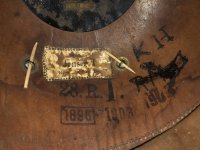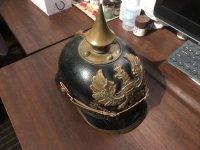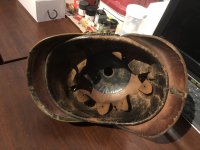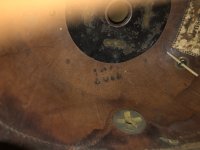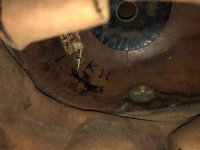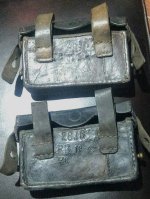Peter B
Well-known member
I have just purchased a Prussian Pickelhaube and would appreciate some help with a few things.
Any information on the interior stamp markings and help in figuring out the soldier's name would be appreciated. The guy I bought it from thought it was Janseg but it could be that or Jansen from what I can see. The weird dropped letter under what might be an "n" is what made him think "g". If you look at the "g" in the regiment bit at the bottom you will see it doesn't really look like a g. I am thinking Jansen and maybe a ghost of another letter there.
Also, what normally holds the wappen on it? You can see someone has put improvised toothpick holders.
Finally, any hints on trying to find out more on Musketier Jansen(g) I of the 1st Company, 28th Regiment from Koblenz. I have done some internet research and found a bit on the 28th. Funny thin is the wife and I will be in Koblenz this summer.
Thanks.
Peter
Any information on the interior stamp markings and help in figuring out the soldier's name would be appreciated. The guy I bought it from thought it was Janseg but it could be that or Jansen from what I can see. The weird dropped letter under what might be an "n" is what made him think "g". If you look at the "g" in the regiment bit at the bottom you will see it doesn't really look like a g. I am thinking Jansen and maybe a ghost of another letter there.
Also, what normally holds the wappen on it? You can see someone has put improvised toothpick holders.
Finally, any hints on trying to find out more on Musketier Jansen(g) I of the 1st Company, 28th Regiment from Koblenz. I have done some internet research and found a bit on the 28th. Funny thin is the wife and I will be in Koblenz this summer.
Thanks.
Peter

